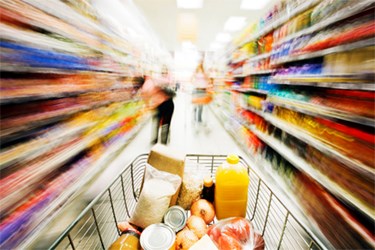Grocery And Convenience Store IT News For VARs — May 8, 2014

By Christine Kern, contributing writer

Loyalty programs continue to be frontline news. This week, a recent study demonstrates that c-store loyalty program participation lags behind grocery and drug store programs. Some retailers believe that rewards programs are not sustainable, and an article from the Harvard Business School busts six myths about loyalty programs and demonstrates that they are indeed profit-enhancing differentiators.
C-store Loyalty Program Participation Far Behind Grocery and Drug Store Programs
Loyalty 360 reports that when it comes to convenience stores, there is an opportunity for loyalty solutions providers, according to research released by General Mills Convenience & Foodservice. The study showed that 89 percent of businesses currently participate in some type of loyalty/reward program across a variety of channels and categories: 64 percent participate from the grocery vertical, 52 percent participate from drugstore/pharmacy, and 35 percent participate from a convenience store/gas station. Ideal programs should focus on three things: an easy and rewarding signup, making it worthwhile for the consumer to participate — as well as keeping things fun.
Busting Six Myths About Loyalty Rewards Programs
In this article from the Harvard Business School, Rajiv Lal and Marcel Corstjens make the case that customer loyalty programs are profit-enhancing differentiators. They examine six myths regarding loyalty programs that can be classified in three groups: (1) architecture of shopper reward (size and convexity of rewards), (2) architecture of retailer rewards (sustainable profitability and horizontal competition), (3) type of retail sector (frequently versus infrequently purchased goods). They conclude that a variety of loyalty programs can be fine-tuned by retailers to produce differentiation and increased profits.
Conexxus retailer panelists reveal how business analytics help their c-stores succeed
Emphasizing how business analytics help improve sales and cut costs, three convenience store retailers speaking at the Conexxus (formerly PCATS) technical conference in Tucson, AZ, said their automated systems allow them to generate meaningful reports from data generated at their stores. In this article from CSP.Net , retailers Jenny Bullard, Donna Perkins, and Ed Freels provide summaries of the automated systems and processes they have in place that allow their staffs to generate any number of reports, ranging from overall category sales to loss-prevention alerts.
Grocery And Convenience Store IT Talking Points
CSP.Net shows how PCATS members break down transaction steps to help develop standards in this article. In the session on mobile payments, committee members worked to show about 40 conference attendees the progress they made in researching existing standards and developing a proposed process that infused the unique perspective of a petroleum and convenience retailer. Identifying “speed to market” as a major goal among many for a mobile-payment standard, the process needs to cover indoor and outdoor transactions, allow for flexibility to innovate, minimize changes to the retail site, provide an optimal experience for customers, and address data security. Other issues include pre-authorizations, denied payments, multiple payment forms, and receipts delivered via text messaging or e-mail.
For more news and insights, visit BSMinfo’s Grocery and Convenience Store Tech Center.
